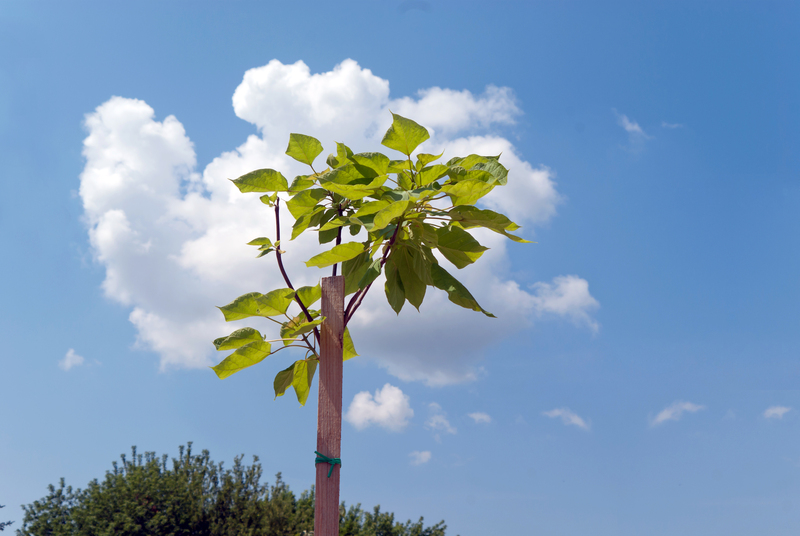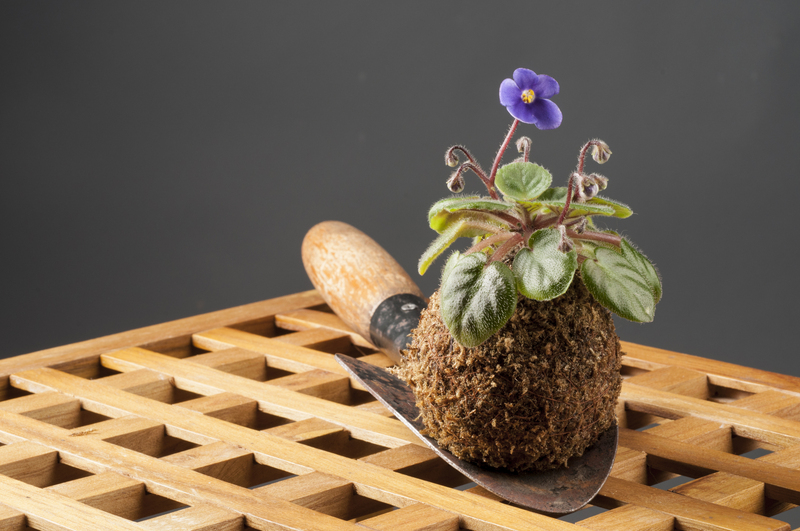Grow Your Privacy with Strategic Garden Landscaping
Discovering creative ways to establish privacy in your outdoor area is a priority for countless homeowners. Whether you live in a bustling city or a suburban neighborhood, maintaining an inviting, secluded haven is essential. This comprehensive guide will show you how to grow your privacy with strategic garden landscaping, blending aesthetics and practicality to turn your yard into a sanctuary.
Why Prioritize Privacy in Your Garden?
A private garden brings countless benefits:
- Enhanced comfort: Rest, sunbathe, or entertain without worrying about prying eyes.
- Noise reduction: Dense plantings and barriers buffer both unwanted sights and sounds.
- Increased property value: Homebuyers often favor homes with well-planned, private outdoor spaces.
- Security: Strategic landscaping acts as a deterrence to trespassers.
- Personalized living space: Embrace your unique tastes and needs in a secluded oasis.

Assessing Your Garden's Privacy Needs
Before planting or building, evaluate your existing garden landscape:
- Where do you lack privacy? (Patios, decks, pools, or garden nooks)
- What are your main concerns--noise, visual intrusion, or both?
- What's your budget and how much ongoing maintenance can you manage?
- Are there any local regulations or HOA guidelines?
- How much sunlight and space do you have to work with?
This preliminary assessment will help guide your selection of the most effective and strategic garden landscaping for privacy.
Strategic Approaches to Garden Privacy
Create Living Green Screens
One of the most natural and visually pleasing ways to increase privacy is through hedges, screening trees, and vertical gardens. These living green screens offer texture, color, and seasonality that hardscaping cannot match.
Choosing the Best Privacy Plants
Consider these popular privacy plants, chosen for different climates and garden sizes:
- Evergreen hedges: Boxwood, Laurels, Privet, Holly, Leyland Cypress
- Fast-growing trees: Thuja Green Giant, Arborvitae, Silver Birch, Magnolias
- Tall grasses and bamboos: Miscanthus, Pampas Grass, Clumping Bamboo (avoid invasive types!)
- Flowering shrubs: Lilac, Forsythia, Hydrangea, Viburnum
- Climbing plants: Clematis, Jasmine, Honeysuckle, Wisteria on trellises or pergolas
Placement and Design Tips
For optimal results:
- Layer your plantings: Combine tall trees, medium shrubs, and low groundcovers for depth and coverage.
- Stagger heights and distances: Naturalistic arrangements both screen and soften boundaries.
- Account for growth: Plant far enough from fences or buildings to allow for mature size.
- Utilize container gardening: For patios or decks, large planters with tall grasses or bamboo provide instant screens and flexibility.
A living privacy wall also attracts birds and pollinators, adding even more life to your sanctuary.
Hardscape Solutions for Ultimate Privacy
Sometimes, strategic plantings alone don't solve all privacy concerns. Incorporate hardscape elements for structure and permanence:
- Privacy fences: Choose from wood, vinyl, metal, or composite in heights tailored to your needs (local regulations may apply).
- Garden screens and panels: Wood slats, decorative metal, or even recycled materials can provide fast, beautiful partitions.
- Pergolas and arbors: Add vertical interest, especially when combined with climbing plants.
- Freestanding walls: Brick, stone, or rendered masonry blocks noise and sightlines effectively.
- Gazebos and pavilions: Create enclosed or semi-enclosed spaces for ultimate seclusion.
When integrating these features, blend materials and styles with your home and garden design for unity and flow.
Integrating Water Features for Sound Privacy
Visual privacy is important, but sound plays a critical role in sanctuary design. Consider:
- Fountains and bubblers: Gentle running water masks street noise and provides a peaceful ambiance.
- Ponds or waterfalls: Larger installations enhance the garden's ecosystem while improving acoustic privacy.
These features not only block unwanted noise but serve as a soothing focal point, deepening the sense of retreat.
Multi-Layered Garden Landscaping for Maximum Privacy
The most effective privacy gardens use a combination of plants, hardscapes, and clever spatial design:
- Enclose critical areas: Place primary screens around patios, pools, or seating areas, while allowing peripheral spaces to remain more open.
- Create garden "rooms": Pathways, hedges, and screens divide the garden into intimate zones, adding intrigue and minimizing long sightlines.
- Use elevation changes: Raised beds, berms, or sunken patios further obscure sightlines and increase privacy.
- Layer textures and colors: Blending evergreens, deciduous plants, and flowering species camouflages boundaries year-round.
- Integrate seating or features thoughtfully: Position benches or fireplaces where they naturally benefit from existing privacy screens.
Smart Privacy Planting for Every Garden Size
Small Urban Gardens
Maximize privacy in compact backyards or balcony gardens with these strategies:
- Vertical gardening: Use wall-mounted planters, trellises, and privacy screens covered with vines.
- Layered containers: Combine taller shrubs with trailing plants for lush, moveable screening.
- Multi-functional features: Choose fences or screens that double as green walls or architectural statements.
Larger Suburban Yards
Homeowners with more space can create layered privacy borders:
- Mixed hedgerows: Blend ornamental and evergreen shrubs, trees, and perennials along fence lines.
- Strategic "buffer zones": Leave wild areas or naturalized plantings along edges for an extra privacy layer and habitat.
- Semi-enclosed patios or pool zones: Use pergolas, lattice screens, and flowering vines to enclose primary living spaces.
Large Estates and Country Gardens
Utilize your scale with woodland clumps, allees, and winding pathways:
- Woodland belts: Plant groups of fast-growing trees (birch, poplar, cypress) for large-scale enclosure.
- Ornamental groves: Create visually interesting screens with small ornamental trees and masses of tall shrubs.
- Winding paths: Design paths that direct sightlines and create 'hidden' garden rooms beyond first glance.
Seasonal Interest & Year-Round Screening
A key principle in strategic garden privacy landscaping is providing screening that works in all seasons. Here's how:
- Evergreen backbone: Plant conifers, broadleaf evergreens, or sturdy hedges like holly for winter privacy.
- Deciduous layers: Fast-growing, leafy trees and shrubs offer privacy from spring through fall, and beautiful color.
- Ornamental elements: Trellises and fences maintain coverage even when plants die back.
- Late-season bloomers and berries: Hydrangeas, viburnum, cotoneaster, and ornamental grasses add interest and screening through autumn and beyond.
DIY Privacy Screens: Quick and Creative Projects
For a fast privacy boost, try these DIY-friendly solutions:
- Pallet or slatted privacy screens: Upcycle pallets or build a custom panel to partition patios or balconies.
- Movable planter walls: Use casters on built-in planters for adjustable screening as needed.
- Bamboo fencing: Lightweight rolls of bamboo can be attached to existing fences or posts for instant coverage.
- Outdoor curtains: Weatherproof fabric panels for pergolas or porch sides create cozy, flexible enclosures.
Maintenance Tips for Lasting Privacy
A private garden must also be easy to maintain. Keep your sanctuary thriving by:
- Regular pruning: Keeps hedges dense and healthy, maximizing screening and minimizing sprawl.
- Watering and feeding appropriately: Newly planted screens require extra care their first year.
- Monitoring plant health: Keep an eye out for pests, diseases, and signs of stress.
- Cleaning and treating materials: Maintain wooden or metal screens to prevent decay and rust.
- Seasonal review: Check your screening's effectiveness and fill gaps or adjust as needed.
Eco-Friendly and Wildlife-Friendly Privacy Landscaping
Growing your privacy strategically also benefits the environment. Choose native plants and support local ecosystems:
- Native hedgerows: Provide shelter and food for birds, pollinators, and beneficial insects.
- Pollinator-friendly borders: Include flowering perennials, shrubs, and herbs for bees and butterflies.
- Water features and birdbaths: Attract wildlife while enhancing ambiance.
- Reduced chemical use: Healthy, dense plantings suppress weeds naturally and require fewer pesticides.

Professional Help vs. DIY: Making the Best Decision
While many privacy landscaping projects are well within the reach of enthusiastic DIYers, consider consulting landscape designers when:
- Dealing with difficult slopes or drainage
- Screening for wind or extreme weather
- Integrating major hardscape structures
- Optimizing a complex or multi-use space
Landscape professionals bring expertise in plant selection, layout, and regulations, ensuring your investment grows beautifully and sustainably.
Conclusion: Your Private Oasis Awaits
With the right design, you can grow your privacy with strategic garden landscaping, no matter your space or budget. Combine living screens, smart hardscaping, and thoughtful design to create a retreat you'll cherish for years. Privacy gardening isn't just about blocking views--it's about cultivating tranquility, beauty, and a greener world outside your window.
Are you ready to transform your yard into a sanctuary? Start today, and enjoy watching your personal paradise grow!